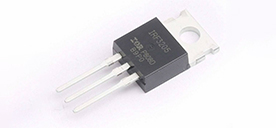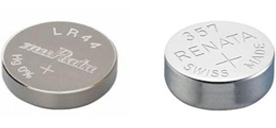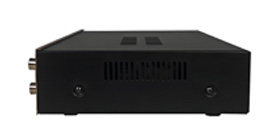Working principle and application analysis of chip inductors
2024/2/2 9:46:59
Views:
Thin inductors, also known as chip inductors or planar inductors, are a type of inductor device that include multiple coils and magnetic cores. It filters and isolates current by generating a magnetic field in the coil, storing and releasing electrical energy. Thin inductors usually consist of planar windings, magnetic material, and a casing.
The thin inductor structure is relatively simple and includes the following main parts:
Planar Winding: This is the core component of a thin inductor, usually made of metal foil or wire wound in a specific pattern on a magnetic material. Planar winding design and layout are critical to inductor performance.
Magnetic materials: Magnetic materials play a role in conducting electricity and concentrating magnetic fields in thin inductors. Commonly used magnetic materials include ferrite, iron hydride and soft magnetic alloy, etc., which have high magnetic permeability and saturation magnetic induction intensity.
Shell: The shell is used to protect and fix thin inductors, usually made of non-magnetic materials, to ensure the stability and reliability of the inductor device and provide mechanical protection.
Thin inductors have several distinctive features:
Small and lightweight: Compared with traditional coil-type inductors, thin inductors are smaller and lighter. Their planar windings and thin construction allow for easy integration into various electronic devices and circuits.
Efficient and stable: Thin inductors have high energy conversion efficiency and stability. They can store and release electrical energy and filter and isolate current while consuming less power and minimizing current leakage.
Broadband response: Due to the planar winding design and layout, low-profile inductors have good response capabilities over a wide frequency range. This makes them suitable for processing and transmitting high-frequency and low-frequency signals to meet the needs of different application scenarios.
Anti-interference: Thin inductors have good anti-interference performance. Through reasonable design and layout, they can effectively reduce the impact of external electromagnetic noise on the circuit and improve the anti-interference ability of the overall system.
Temperature stability: Thin inductors have good temperature stability due to the selection and characteristics of the magnetic materials. They can maintain stable performance at higher operating temperatures and adapt to some application scenarios that are sensitive to temperature changes, such as automotive electronics, aerospace, and industrial automation.
High reliability: Thin inductors have high reliability. They can withstand environmental effects such as vibration, shock and temperature changes, and have a long service life and stable performance.
The manufacturing process of thin inductors includes the following steps:
1. Material selection: Select appropriate wire materials, magnetic materials, and housing materials, and process and prepare them.
2. Winding insulation: Coating an insulation layer on the magnetic material to prevent short circuits between windings.
3. Wind the planar winding: Wind the wire into a planar winding according to the design requirements to ensure insulation and connectivity between the windings.
4. Embed magnetic material: Embed the wound planar winding into the magnetic material to conduct and concentrate the magnetic field.
5. Encapsulation shell: The magnetic material embedded with the planar winding is encapsulated in a non-magnetic material shell to provide protection and fixation.
6. Testing and quality control: Test and quality control the manufactured thin inductors to ensure that they meet the design requirements and performance indicators.
Thin inductors are widely used in many electronic devices and circuits, including communications, automotive electronics, industrial automation, aerospace, medical equipment, and consumer electronics. They play key roles in radio frequency modules, power management, engine control, navigation systems, circuit filtering and isolation, and more.
The thin inductor structure is relatively simple and includes the following main parts:
Planar Winding: This is the core component of a thin inductor, usually made of metal foil or wire wound in a specific pattern on a magnetic material. Planar winding design and layout are critical to inductor performance.
Magnetic materials: Magnetic materials play a role in conducting electricity and concentrating magnetic fields in thin inductors. Commonly used magnetic materials include ferrite, iron hydride and soft magnetic alloy, etc., which have high magnetic permeability and saturation magnetic induction intensity.
Shell: The shell is used to protect and fix thin inductors, usually made of non-magnetic materials, to ensure the stability and reliability of the inductor device and provide mechanical protection.
Thin inductors have several distinctive features:
Small and lightweight: Compared with traditional coil-type inductors, thin inductors are smaller and lighter. Their planar windings and thin construction allow for easy integration into various electronic devices and circuits.
Efficient and stable: Thin inductors have high energy conversion efficiency and stability. They can store and release electrical energy and filter and isolate current while consuming less power and minimizing current leakage.
Broadband response: Due to the planar winding design and layout, low-profile inductors have good response capabilities over a wide frequency range. This makes them suitable for processing and transmitting high-frequency and low-frequency signals to meet the needs of different application scenarios.
Anti-interference: Thin inductors have good anti-interference performance. Through reasonable design and layout, they can effectively reduce the impact of external electromagnetic noise on the circuit and improve the anti-interference ability of the overall system.
Temperature stability: Thin inductors have good temperature stability due to the selection and characteristics of the magnetic materials. They can maintain stable performance at higher operating temperatures and adapt to some application scenarios that are sensitive to temperature changes, such as automotive electronics, aerospace, and industrial automation.
High reliability: Thin inductors have high reliability. They can withstand environmental effects such as vibration, shock and temperature changes, and have a long service life and stable performance.
The manufacturing process of thin inductors includes the following steps:
1. Material selection: Select appropriate wire materials, magnetic materials, and housing materials, and process and prepare them.
2. Winding insulation: Coating an insulation layer on the magnetic material to prevent short circuits between windings.
3. Wind the planar winding: Wind the wire into a planar winding according to the design requirements to ensure insulation and connectivity between the windings.
4. Embed magnetic material: Embed the wound planar winding into the magnetic material to conduct and concentrate the magnetic field.
5. Encapsulation shell: The magnetic material embedded with the planar winding is encapsulated in a non-magnetic material shell to provide protection and fixation.
6. Testing and quality control: Test and quality control the manufactured thin inductors to ensure that they meet the design requirements and performance indicators.
Thin inductors are widely used in many electronic devices and circuits, including communications, automotive electronics, industrial automation, aerospace, medical equipment, and consumer electronics. They play key roles in radio frequency modules, power management, engine control, navigation systems, circuit filtering and isolation, and more.
Related Information
-
-
Phone
+86 135 3401 3447 -
Whatsapp





